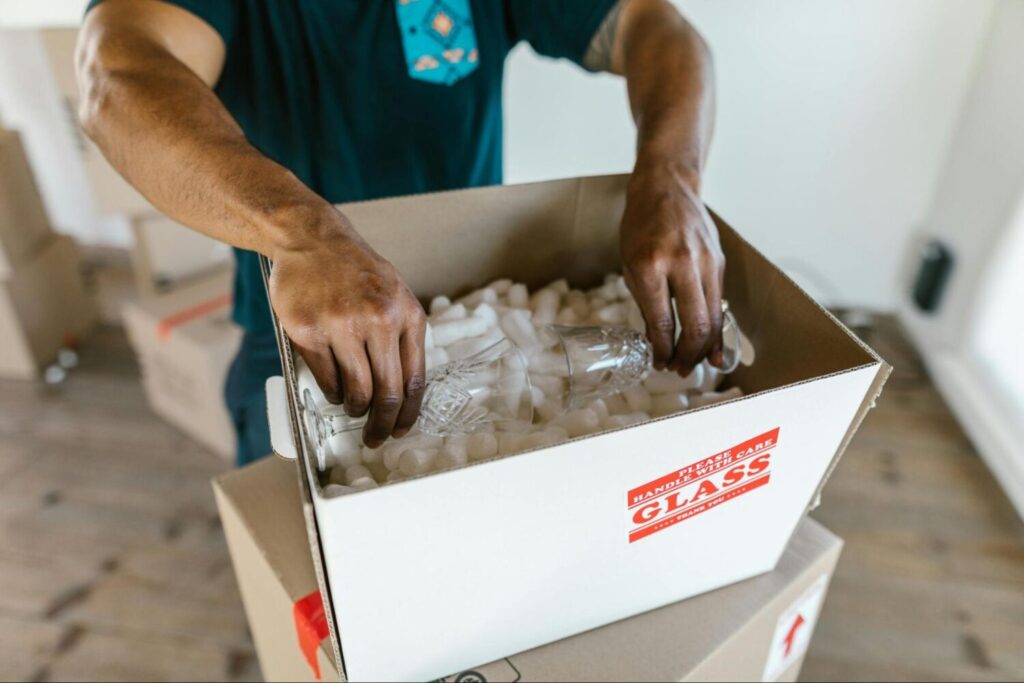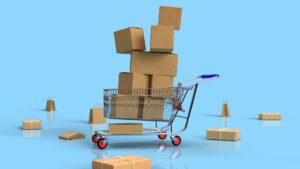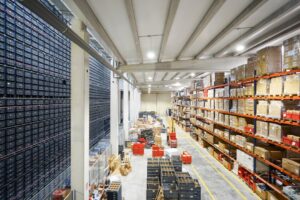Chances are, we are all familiar with packing materials for shipping. The package arrives, and it will have some sort of packing materials inside to protect the contents. It might be paper, it might be bubble wrap, it might be peanuts… but whatever it is, the intention behind it is to protect the contents of the package.
The materials in the package might be there to absorb shocks or to keep the contents from bouncing around during shipping. Or, the shipping supplies could be surrounding and protecting a fragile or breakable item. Choosing the correct packing materials is vital. Not only must the shipper choose the right packing materials, but they must also choose the right size box, crate, or envelope.
In this writing, we will look into the many different types of packing materials for shipping. We’ll go into the thought and consideration that the shipper uses in deciding what kind of container to use for shipping, and what kind of packing materials to use.
We invite you to explore the various packing materials for shipping discussed throughout this article.
Types of Packing Materials and Their Uses
Below, we will go into the various types of packing materials that shippers have to choose from, and we will look at what specific materials are used for. Packing materials come in a variety of styles to suit different shipping needs, offering both functional and aesthetic options.
Cushioning Materials
Cushioning materials are basically used for shock absorption. If a package is dropped or bumped, the cushioning materials will protect the item being shipped.
- Bubble wrap is a lightweight and protective cushioning material, frequently used in shipping, and often utilized to protect fragile items.
- Foam Inserts & Peanuts – We’re all aware of peanuts and foam inserts in our packages. The foam inserts and peanuts are ideal for delicate electronics and items made of glass or other breakable materials.
- Air Pillows are a cost-effective way to fill space in the carton to keep the items being shipped protected from bouncing around in the box. Air pillows are space-efficient for filling voids.

Wrapping & Securing Materials
Materials used to protect the surface of a shipment, and materials used for securing multiple items that are being shipped together, are called wrapping and securing materials.
- Stretch Wrap is used to stabilize multiple materials being shipped on pallets. It is used in various instances where items are being bundled together.
- Packing Paper is used for padding and void fill to keep items from moving within the carton. The advantage of packing paper is that it is eco-friendly, recycled, and biodegradable.
- Corrugated Inserts can also be recycled and are eco-friendly. The corrugated inserts will provide structural support and prevent movement of the carton contents.
Box & Container Options
These are the containers that products are packed and shipped within, and are also used for containment and stacking of the contents.
- Corrugated Boxes are frequently used to ship products of all types. The corrugated box is the standard choice for shipping due to the fact that it is durable and versatile.
- Padded Mailers & Envelopes are used most often for smaller, lightweight products that are flat or close to flat.
- Plastic Containers are used when shipping high-value items, as the container is hard and cannot be crushed or broken. These containers are also reusable.
Labels on these containers are essential for identification, security, and efficient handling of packages, ensuring that each container or mailer is properly tracked and processed during shipping.
Eco-Friendly & Sustainable Packing Materials
Many shippers and customers want to use sustainable and eco-friendly materials, and certainly, biodegradable packaging is beneficial to the environment. Below are some innovative and sustainable solutions in packing materials for shipping.
- Recycled Cardboard & Paper are often used by shippers as alternatives to traditional packing.
- Biodegradable Packing Peanuts are much preferred to the former Styrofoam-type of peanuts that were used for many years. The eco-friendly packing peanuts are made from cornstarch.
- Mushroom & Cornstarch-Based Packing Materials are being used nowadays as they are biodegradable. Mushroom packaging is made with hemp hurd and mycelium. Cornstarch containers use polylactic acid (PLA) plastic made by fermenting plant sugar and starch. This type of plastic is much more environmentally friendly and does not include toxic materials.
What Are the Benefits of Proper Packaging?
Investing in the right shipping supplies is essential for businesses aiming to protect their goods and maintain a strong reputation. Using the right combination of boxes, cushioning materials, and other packaging supplies helps ensure that packages arrive at their destination intact, minimizing the risk of damage during transit. This not only leads to happier customers and fewer returns but also streamlines your shipping process, making it more efficient and cost-effective. By choosing high-quality packaging supplies, businesses can demonstrate their commitment to delivering goods safely and efficiently, which in turn builds trust and loyalty among customers. Proper packaging also helps companies stand out in a competitive market, reinforcing their dedication to quality and customer satisfaction.
Choosing the Right Packing Materials for Your Business
The shipper has a number of factors to consider when deciding what kind of container and what kind of packing materials to use for shipping. Of course, the shipper would look at the type of product, whether or not it is fragile, what the weight of the product is, how far the package has to go to reach the customer, and how to ensure safe delivery when moving items from one place to another. For specialized or unique packing needs, consulting experts can help ensure the best solutions are used.
Different sizes of packages and weights, plus the distance to the destination, will determine the cost of shipping. The shipper needs to consider both the cost and the protection of the product and find the right balance, while also maintaining the integrity of the items during shipping. It’s easy to select the right packing materials for different needs, especially with the wide availability at a dedicated store. The convenience and ease of placing an order for packing materials online or at a store make the process simple and accessible. Competitive pricing is also an important factor when choosing packing materials. If the client wants to use biodegradable packaging, that goes into consideration as well. Streamlining the selection and ordering process can improve efficiency and help organize supplies. The preferences of the client will be adhered to, with the shipper doing their best to meet all requirements.
Best Practices for Efficient Packing and Shipping
The best practices for packing and shipping include protection of the item being shipped as well as an effort to reduce dimensional weight (DIM) by optimizing the packing.
Dimensional weight is a calculation used by shipping carriers to determine the cost of a package. Essentially, it measures how much space a package occupies in relation to its weight. When packaging items, the shipper will keep in mind the DIM weight in an effort to reduce costs. The shipper also must stay in compliance with the carrier’s packaging guidelines.
Conclusion
We have talked about different cushioning materials, such as bubble wrap, foam inserts, packing peanuts, and air pillows, which are used to secure and protect the item being shipped, keeping it from being damaged during the journey to the customer. We also talked about materials used to wrap and secure shipments of multiple items, such as stretch wrap, packing paper, which is also used for void fill, and corrugated inserts, which are used for structural support.
We went through the box and container options, such as corrugated boxes, padded mailers and envelopes, and plastic containers, and we concluded with a conversation about the eco-friendly and sustainable packing materials. These include recycled cardboard and paper, biodegradable packing peanuts, and mushroom and cornstarch-based packing materials.
AMS Fulfillment is an expert at utilizing different packing materials for shipping in the service of their clients. Client satisfaction is vital when it comes to the shipping of their products. Some clients prefer to provide their own containers and packing materials in accordance with their brand, and others very much appreciate the fact that AMS utilizes biodegradable products, as the company is a B Corporation, dedicated to environmentalism. AMS has excellent relationships with the carriers and methods of keeping the cost of shipping as low as possible for its clients.
Readers are invited to contact AMS Fulfillment for a consultation or for more information. At AMS, we help our clients as a business partner. AMS Fulfillment has been in business for more than twenty years, helping every client to optimize their packing and shipping processes.
FAQs
What packing material is best for shipping?
- This depends on the item being shipped; foam and bubble wrap are best for fragile items, while packing peanuts and foam inserts are better for electronics.
What is the cheapest packing material for shipping?
- To find the cheapest options for your needs, you’ll need to look at the dimensional weight and size of the items being shipped, as well as the environmental and disposal costs; packing materials that are non-recyclable or hard-to-dispose may end up costing you more in the long run. Additionally, you want to find packing materials that are still high-quality to avoid broken and damaged items in shipping.
What are the downsides of bubble wrap?
- The biggest downside to bubble wrap is the environmental impact – because it’s made of plastic, it’s not biodegradable like other packing materials such as cardboard and paper. Additionally, bubble wrap is relatively ineffective for larger items that require robust cushioning.




